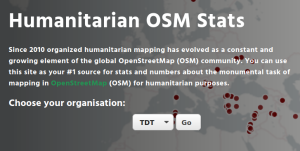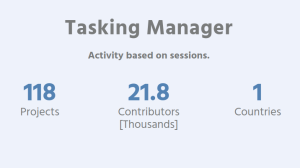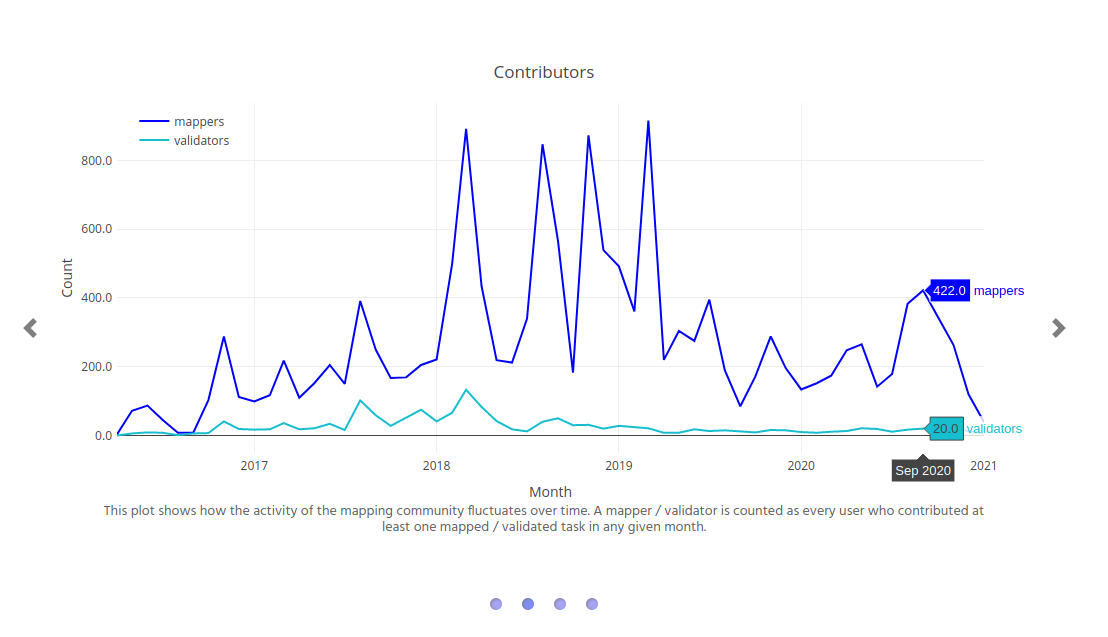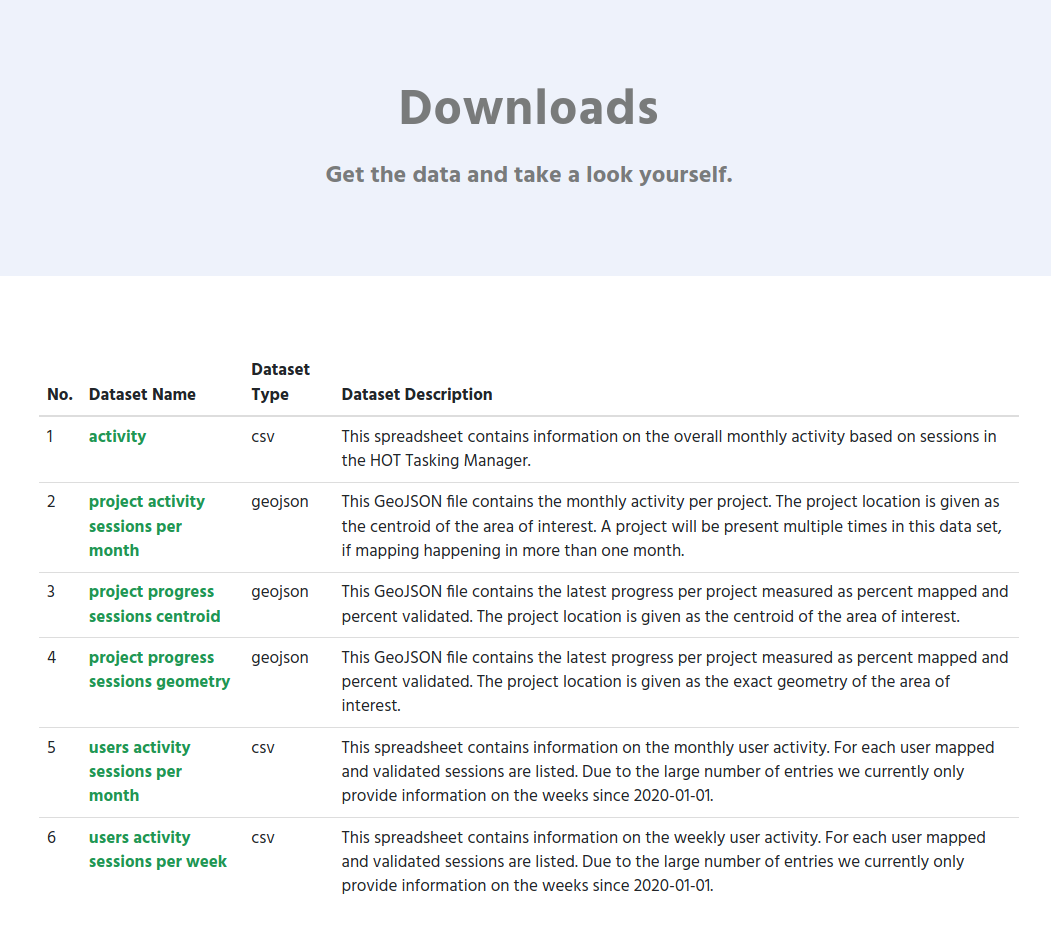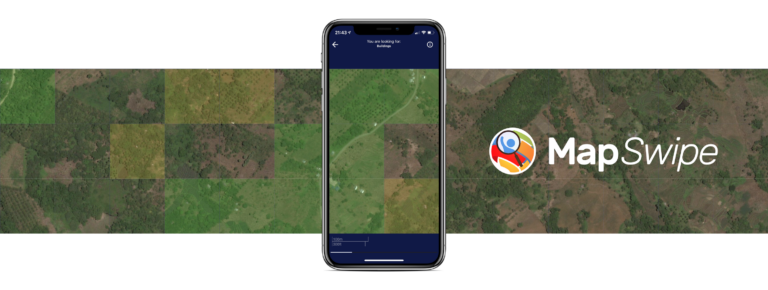Since 2010 organized humanitarian mapping has evolved as a constant and growing element of the global OpenStreetMap (OSM) community. With more than 7,000 projects in 150 countries humanitarian mapping has become a global community effort. Due to this large amount of projects it can be difficult to get an overview on mapping activity. This is why we worked on the “Humanitarian OSM Stats” website to make it easier to find the information you are looking for. It combines data from the open-source Tasking Manager hosted by the Humanitarian OpenStreetMap Team (HOT) and information from OpenStreetMap (OSM) that has been processed using the ohsome OSM History Data Analytics Platform developed by HeiGIT.
In this post we will take a closer look at the humanitarian mapping projects organized by Tanzania Development Trust (TDT). TDT is a volunteer run UK registered charity that has been supporting grassroots projects in rural Tanzania for 45 years. Getting lost while visiting these projects, and learning how the lack of maps hampered the work of their local rep and female genital mutilation (FGM) survivor and activist Rhobi Samwelly, chair Janet Chapman started Crowd2Map in 2015. Since then over 20,000 volunteers (as we will find out in this post) have added data to OSM and helped save an estimated 3000 girls from being cut. Anyone with an internet connection is very welcome to join TDT, so get in touch!
This is the first blog post of a series of posts we planned. If you are interested in a similar analysis please reach out to us (benjamin.herfort@heigit.org) and we can try to cover your questions in a future post.
Goals
In this blog post we will perform three relatively easy goals:
- Get the overall number of Tasking Manager projects for an organization (here we use Tanzania Development Trust).
- Get the overall number of contributors for this organization.
- Get the number of volunteers that have mapped in the Tasking Manager in a specific month (here we use 2020-09).
- Download all the data needed for the things above.
How to get the information from the website
- Visit the humstats.org website and select your organization and click on “go”. This will direct you to a new site with the statistics for the selected organization.
- Scroll down a bit and you already get the overall number of projects in the Tasking Manager and the number of distinct users that have contributed to these projects. For Tanzania Development Trust we see that more than 21,000 users have contributed to 118 projects.
- Scroll down a bit further and take a look a the line graphs. Click on the litte arrow on the right and the slider will move to the next graph. This tells you the number of contributors per month. For September 2020, 420 mappers and 20 validators have been active.
Download the data in a spreadsheet
If you are interested to get the data behind there numbers and plots continue scrolling down the page. On the website we offer a list of files to download. The activity.csv is the one that you need for the purpose described in this blog post. For instance for TDT this file will be located here: https://humstats.heigit.org/api/export/tdt/activity.csv
Step 4: Download spreadsheet.
The spreadsheet contains information on the overall monthly activity based on sessions in the HOT Tasking Manager. Within this file “cum” always refers to the cumulative number (the total number up to this point in time). For instance, “cum_projects” will tell you how many projects have been mapped in total up to a specific month. Whereas “projects” will tell for how many projects mapping activity has been observed in the selected month only.
Here are some potentially interesting things to look out for:
- projects, cum_projects: the number of projects in the Tasking Manager
- countries, cum_countries: the number of distinct countries in which projects are located. This uses country attribute set in the Tasking Manager
- users_mapper, cum_users_mapper: the number of users that used the Tasking Manager and set the status of a task to “mapped”
- users_validator, cum_users_validator: the number of users that used the Tasking Manager and set the status of a task to “validated”
To be continued
In the next blog post of this series we will show you how to get information about the community behind the mapping activity.


